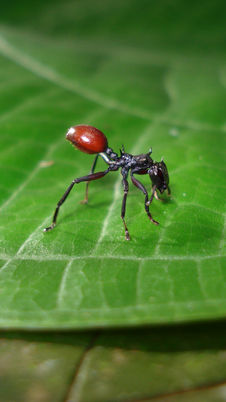top of page


Threads of Trouble: The Story of Copiatestes and Our Manu by Dr. Jerusha Bennett
Kia ora e te whānau! Ever seen a seabird with strange thread-like anklets? They might look like seaweed or trash… but they’re actually fish parasites—and they’re causing serious trouble for our manu. In this video, Dr. Jerusha Bennett at the University of Otago (Dunedin, New Zealand) shares the story of Copiatestes, a trematode parasite with a complex life cycle that unexpectedly intersects with the lives of seabirds. From snails to krill to fish, Copiatestes follows a precis


Tick Graduation Card
Ticks, like the blacklegged tick Ixodes scapularis , have a complex multi-host lifecycle. They must feed on blood at each stage of their...


Hookworm Graduation Card
Eggs of Ancylostoma duodenale in stool develop into infective larvae in warm, moist soil. The larvae penetrate the skin of the bottom of...


Malaria Graduation Card
The malaria-causing parasite, Plasmodium , has a complex two-host lifecycle. In both hosts, the parasite must use and migrate through...


Copy of Why would a worm turn an ant into a berry?
Part Three: Untangling the Mystery of Red Gaster Ants By Dr. Kyle Lesack The ability of certain parasites to modify the appearance or...


Copy of Why would a worm turn an ant into a berry?
Part Two: In a Fortuitous Turn of Events By Dr. Kyle Lesack Parasitism of Cephalotes atratus by Myrmeconema neotropicum In a fortuitous...
Why would a worm turn an ant into a berry?
Part One: Introduction to Parasitism and Host Manipulation By Dr. Kyle Lesack Nature provides countless examples of ingenious adaptations...


Dating app
One tongue-eating louse, Cymothoa exigua, was described in our Halloween comic: Free-swimming, juvenile Cymothoa exigua males attach to...


Apicomplexan Fireworks
Toxoplasma gondii is a single-celled parasite that infects animals. Cyst forms wait in the muscle tissue of intermediate hosts to be...


The Zombie Ant
The lancet liver fluke, Dicrocoelium dendriticum, has a three-host lifecycle. Eggs in feces hatch and infect a snail. There, the larvae...
bottom of page
